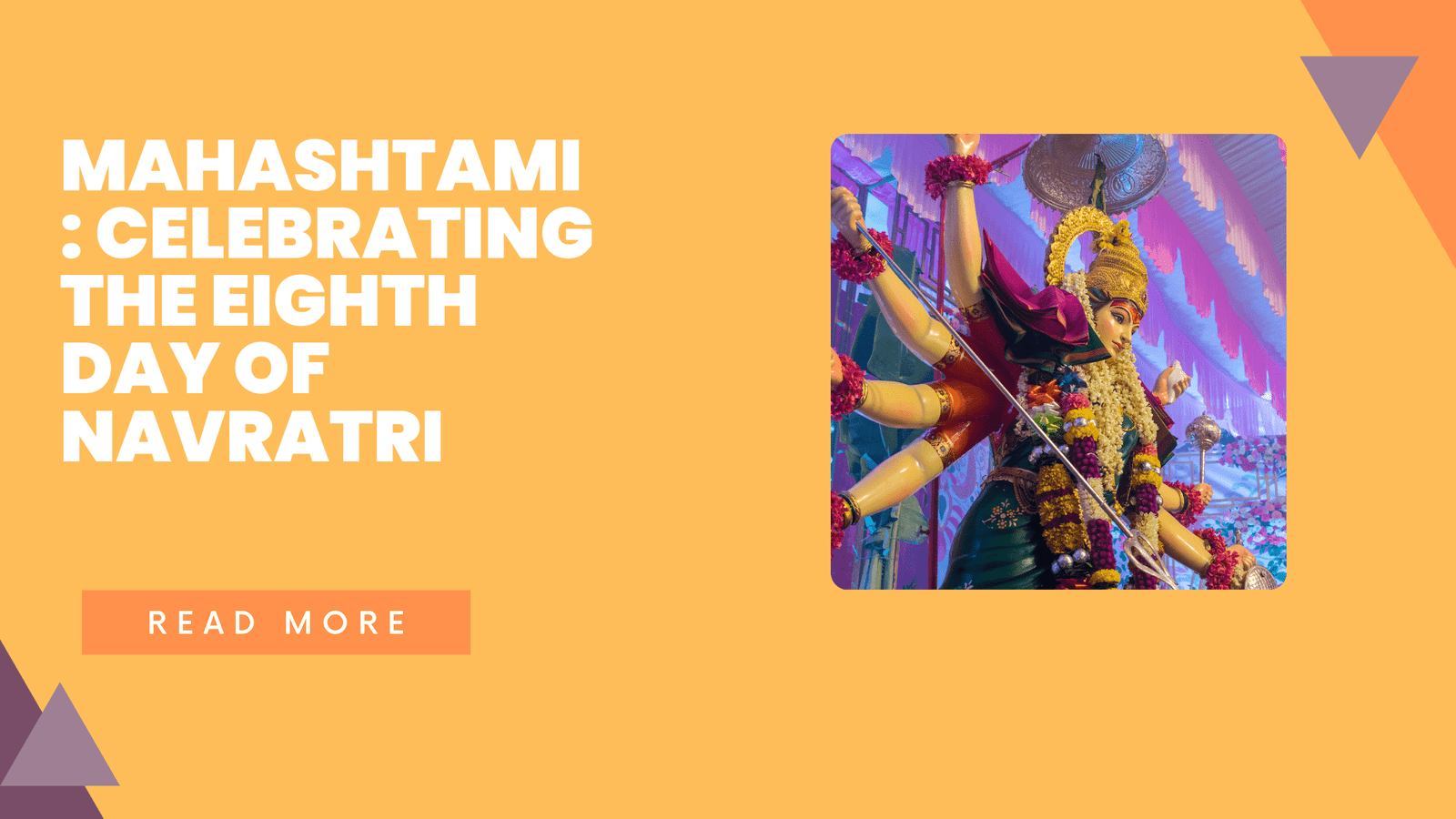Mahashtami: Celebrating the Eighth Day of Navratri
Mahashtami, also known as Durga Ashtami, is the eighth day of the Navratri festival, dedicated to worshipping Goddess Durga. In 2025, Mahashtami falls on Tuesday, September 30. The Ashtami Tithi begins at 4:31 PM on September 29 and ends at 6:06 PM on September 30 in New Delhi, India.
Significance of Mahashtami
Mahashtami holds profound importance in Hindu tradition:
- Victory of Good Over Evil: It commemorates Goddess Durga’s triumph over the buffalo demon Mahishasura, symbolizing the victory of good over evil.
- Worship of Goddess Maha Gauri: Devotees offer prayers to Goddess Maha Gauri, the eighth form of Durga, seeking purity and auspiciousness.
- Sandhi Puja: The auspicious period between the end of Ashtami and the beginning of Navami, known as Sandhi, is observed with special rituals.
How to Perform Mahashtami Pooja
Performing the Mahashtami Pooja with devotion can invite prosperity and blessings. Here’s a step-by-step guide:
1. Preparation
- Cleanliness: Ensure both yourself and the worship area are clean. Taking a ritual bath is customary.
- Puja Materials: Gather all necessary items: idols or images of Goddess Durga, a clean cloth, incense sticks, lamps, flowers, fruits, sweets, and offerings.
2. Establishing the Puja Space
- Altar Setup: Place the idol or image of Goddess Durga on a clean platform or altar.
- Decoration: Adorn the altar with flowers, rangoli, and other decorative items.
3. Invocation
- Lighting the Lamp: Begin by lighting a lamp or diya to purify the surroundings.
- Ganesh Vandana: Offer prayers to Lord Ganesha for the removal of obstacles.
- Main Invocation: Recite the Durga Ashtakshari Mantra: “ॐ दुं दुर्गायै नमः” This mantra invokes the blessings of Goddess Durga.
4. Performing the Rituals
- Shodashopachar Puja: Perform the 16-step worship, which includes:
- Dhyana (Meditation): Meditate upon the deity.
- Avahana (Invocation): Invite the goddess to be present in the idol.
- Asana (Offering Seat): Offer a seat to the goddess.
- Padya (Washing Feet): Wash the deity’s feet symbolically.
- Arghya (Offering Water): Offer water to the goddess.
- Achamana (Sipping Water): Purify yourself by sipping water.
- Snana (Bathing): Symbolically bathe the deity with water, milk, honey, and other auspicious substances.
- Vastra (Clothing): Offer new clothes to the goddess.
- Gandha (Applying Scent): Apply sandalwood paste.
- Pushpa (Flowers): Offer flowers.
- Dhoopa (Incense): Light incense sticks.
- Deepa (Lamp): Offer a lighted lamp.
- Naivedya (Food Offerings): Present fruits, sweets, and other offerings.
- Tambula (Betel Leaves): Offer betel leaves and nuts.
- Pushpanjali (Offering Flowers): Offer flowers while reciting mantras.
- Pradakshina (Circumambulation): Circumambulate the deity.
- Kanya Pujan (Worship of Young Girls): Invite young unmarried girls (considered embodiments of Goddess Durga) to your home, wash their feet, apply tika, offer them new clothes, and serve them a meal.
- Sandhi Puja: Perform this special ritual during the transition period between Ashtami and Navami, considered highly auspicious.
5. Recitation and Offerings
- Chanting: Recite Durga Stotras, Durga Saptashati, or other hymns dedicated to Goddess Durga.
- Offerings: Present the prepared offerings to the goddess with devotion.
6. Concluding the Puja
- Aarti: Perform the aarti of Goddess Durga, singing praises and expressing gratitude.
- Prasadam Distribution: Distribute the offered food (prasadam) among family members and devotees.
- Closing: Conclude






